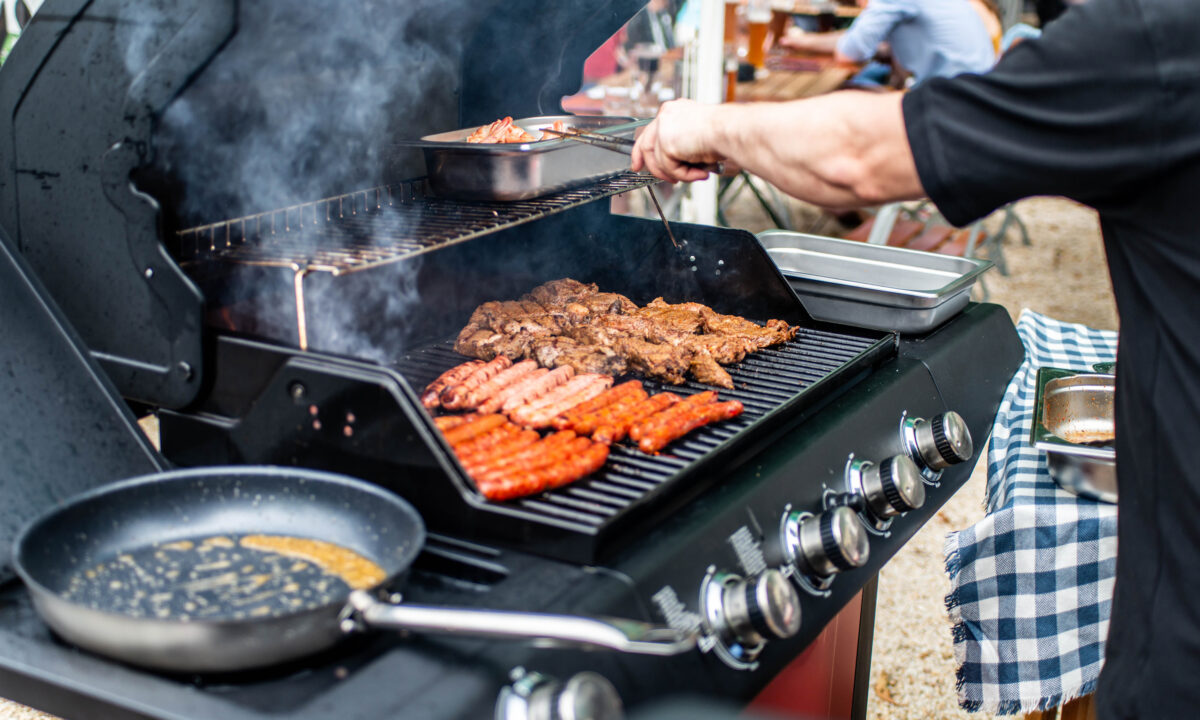Blog

Summertime is barbecue time
Barbecuing with gas barbecues has become increasingly popular, as they are much easier and quicker to use. These are operated with liquid gas. I would therefore like to briefly describe the regulations and safety precautions for the operation of liquid gas systems for barbecues.
Properties:
Liquid gas is heavier than air and is supplied in a pressurized container that contains both liquid and gaseous gas. The gaseous part is required for grilling. The liquid part vaporizes in the cylinder and collects above the liquid phase. The gas is fed to the appliance via the cylinder valve and into the pressure regulator. It should be noted that the pressure regulator only works with gas. Also, when the liquid phase is discharged, approx. 270 times the energy is to be expected. This means that the gas appliance (grill) is no longer able to burn the gas. The unburned portion flows downwards and burns on the floor. This poses a risk to the people present.
Furthermore, the cylinder in question must be protected against heating. If the temperature rises above 50°C, there is a risk of the gas escaping and burning. This can lead to an unintentional gas leak via the safety valve, which can ignite.
The gas is mixed with an odorant so that a gas leak is detected at an early stage.
Storage of gas cylinders:
One gas cylinder may be stored. Another gas cylinder may be connected to the appliance. If this is not connected, this is considered storage. It must also be protected against falling over. If there is a protective cap on the gas cylinder, it must not be used for any purpose.
The Ex zone is 1m. Furthermore, a safety distance (also crawl zone) of 3m must be observed. There must be no fire loads in this area that could pose a risk to the gas cylinders. There must also be no trees or bushes in this area. There must also be no openings such as manhole covers, light wells, depressions, etc. in this area where the gas can accumulate in dangerous concentrations. If this safety area is limited by a wall, it must have the qualification of REI90.
Connecting the gas cylinder to the gas consumption device:
The existing screw connection must be kept in a proper condition. This must be checked before use. The hose must also be checked for cracks and damage. Old hoses may become brittle. It must then no longer be used. All parts must no longer be used if they are obviously damaged.
After connection, check the screw connection for leaks. A leak detection spray is best suited for this. This test spray forms bubbles if there is a gas leak. Soapy water can also be used for this purpose. All you need to do is mix detergent with water and moisten the fitting with it. This has the same effect. It should also be noted that the threads are "left-handed". This means that it cannot be confused with a normal screw.
Stability:
Before use, choose a safe place away from flammable components. The barbecue and the gas cylinder must be positioned in such a way that they cannot fall over. Please have suitable heat protection gloves ready.
Extinguishing gas fires:
A fire that has broken out can be extinguished quickly using suitable extinguishers. The known safety precautions for handling fire extinguishers must be observed. It should also be noted that only turning off the gas cylinder will prevent it from leaking. "Only turned off gas is safe gas!". A fire blanket can also be helpful here.
If the flames are extinguished before turning off, there is an immediate risk of explosion. The gas that continues to escape is explosive.
In the event of major danger, always call the fire department (122).
Empty gas cylinders:
Since every gas cylinder also contains a residue, empty gas cylinders are regarded as full gas cylinders. the same safety regulations apply here.
Regulations:
ÖNORM M 7379 Edition: 03/2017 - Gas storage - Storage of gas cylinders and other transportable pressure vessels
ÖVGW guideline G 26 - July 2019 - Installation of liquid gas cylinders
